Sagging, Bowed or Wavy Roof - Check the Attic for 6 Things


David Jones
Senior Contributor
David Jones is a seasoned home inspector and construction expert with over 20 years of experience. He specializes in structural integrity, foundation issues, and detailed home safety assessments.
View Full Profile →

If your roof is sagging, wavy or bowing, there are six important things in the attic to check from a structural standpoint. Although we generally think of our roofs as one of the major components of our home that keeps us dry, we also need to think of them as a key structural component. When we see sagging, waviness or bowing, then we should be thinking that there may be issues with the framing or even the foundation, therefore, the attic is a good place to start when it comes to investigating if there is anything to be concerned about.
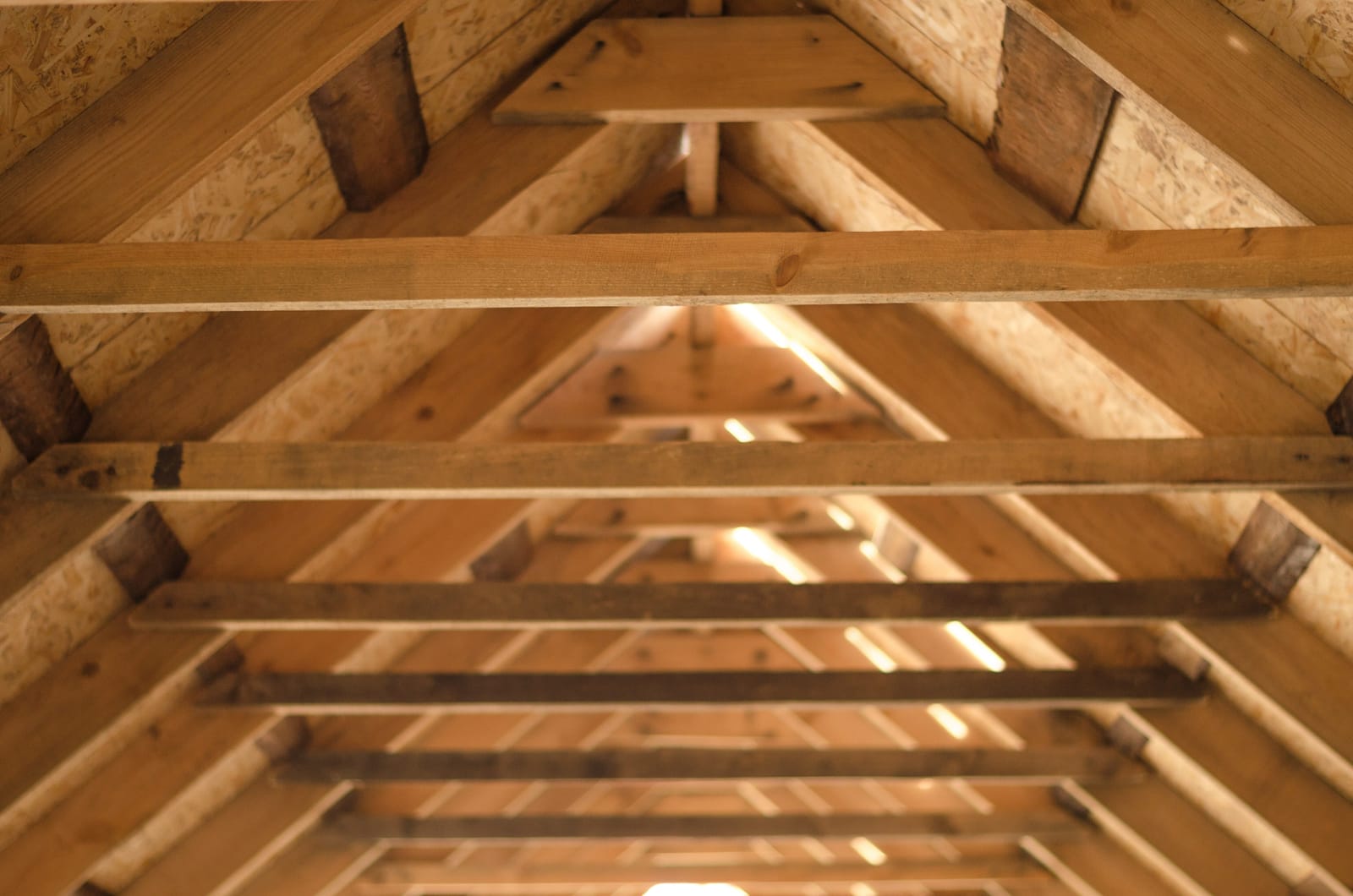
Included in the attic check are the rafters, trusses, roof sheeting as well as the collar and rafter ties – Check for:
-
Cracked and damaged rafters or trusses
-
Modifications to rafters and trusses
-
Collar ties damaged or removed
-
Rafter ties damaged or removed
-
Deteriorated or rotted roof sheeting or framing
-
Ridge board or beam cracked or sagging
First go outside and look at the roof

Engineers will often take a short walk around a house looking at the roof and a few other things before they enter an attic.
They will often start by looking at the roof from the front sidewalk or curb and then walk around the home. They are just getting a rough idea of what issues are visible ( i.e. sagging ridge line, humps, pillowing, waviness, bowing) and where they are the most noticeable. This will often guide them to what area of the attic that they want to start checking first.
Do the exterior walls lean or tilt?
Before you go into the attic, check to see if the exterior walls lean or tilt; are they plumb and not leaning either inwardly or outwardly? Two easy and inexpensive ways you can check this is with a three or four-foot-long level or with a plumb-bob.
-
Are any walls that are parallel, i.e. back and front walls, leaning in the opposite direction; especially outward? May be a framing issue or a foundation issue.
-
Are any walls that are parallel, i.e. back at front walls, leaning in the same direction? May be a foundation issue.
Walls leaning toward the same direction may be an indication of foundation movement. Examples would be differential or tipping settlement. (Read more on settlement)
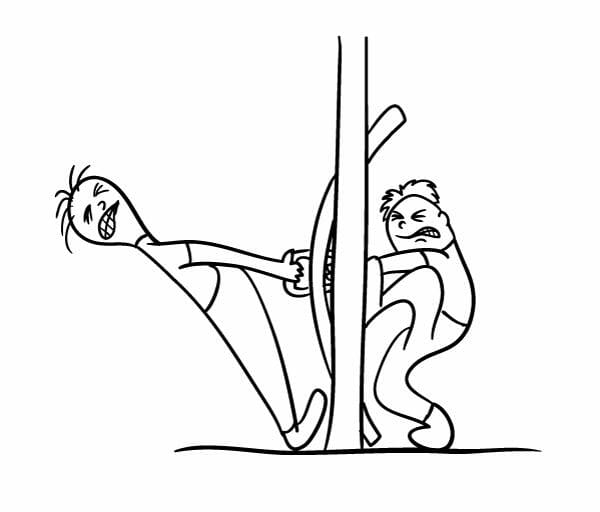
Interior warning signs of possible attic and roof issues
Ceilings
Sagging ceiling could be an indication of framing issues, some of which could be related to the roof. Should the bottom cord of one or more trusses be sagging or damaged, it may be reflected in a sagging ceiling or if the roof is over loaded (to heavy) then the downward pressure may cause the sagging. Even ceiling cracks can be caused by damaged trusses or downward pressures.
Are doors sticking or jambs out of square
Doors at a 90-degree angle to a leaning wall and that stick or are out of square may be an indication of structural movement, which may affect the attic framing and roof.
Stains on ceilings or on top portions of walls
Moisture stains on ceiling areas may be an indication of a leaking roof, therefore, examining the attic area and underside of the roof near the stains would be wise.
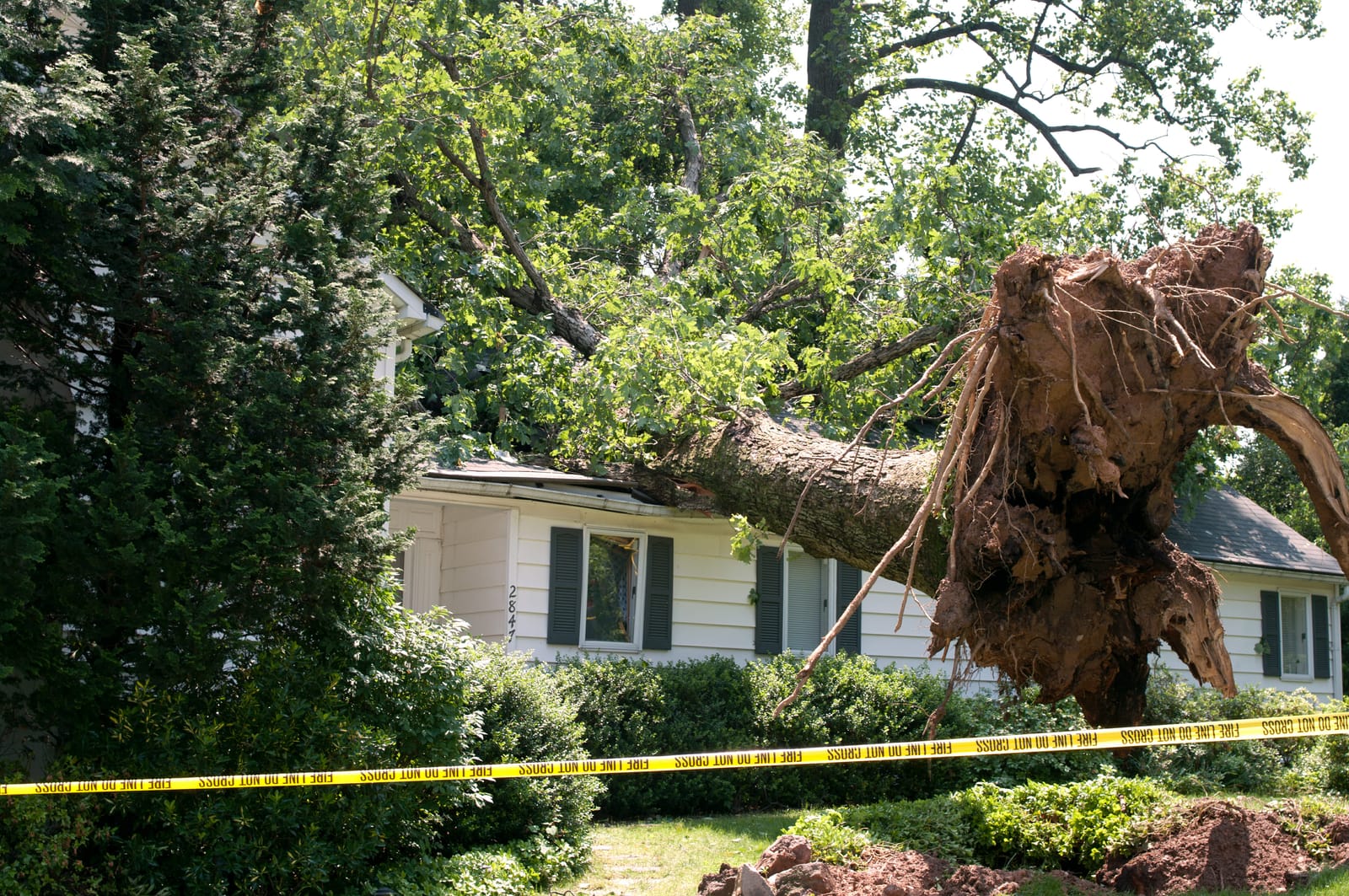
Has there been any past storm damage to the roof
In the past, if the roof has incurred storm damage from high winds or a tree falling on it, it may not have been repaired properly or the repairs may have failed. If you’re a buyer and you noticed roof issues, you may want to inquire if the roof has had past damage from wind or fallen trees.
Equipment you need before entering the attic
-
Have good lighting with you / flash light and or shop type light
-
Wear proper safety equipment – i.e. proper mask, safety glasses, gloves, etc.
-
Pictures – Camera or possibly your phone for photos
Words of caution
Be careful where you step when crawling around in the attic, for you do not want to fall through or damage the drywall. Try to avoid putting pressure on HVAC ducting if you are climbing over ducting and on older ducting be careful not to damage the insulation; remember in some of the older homes the heating and air-conditioning duct may have asbestos material in it or it may be wrapped with asbestos material. (Read more on Asbestos Ducting)
6 Things To Check In The Attic
1. Check Rafters and Trusses
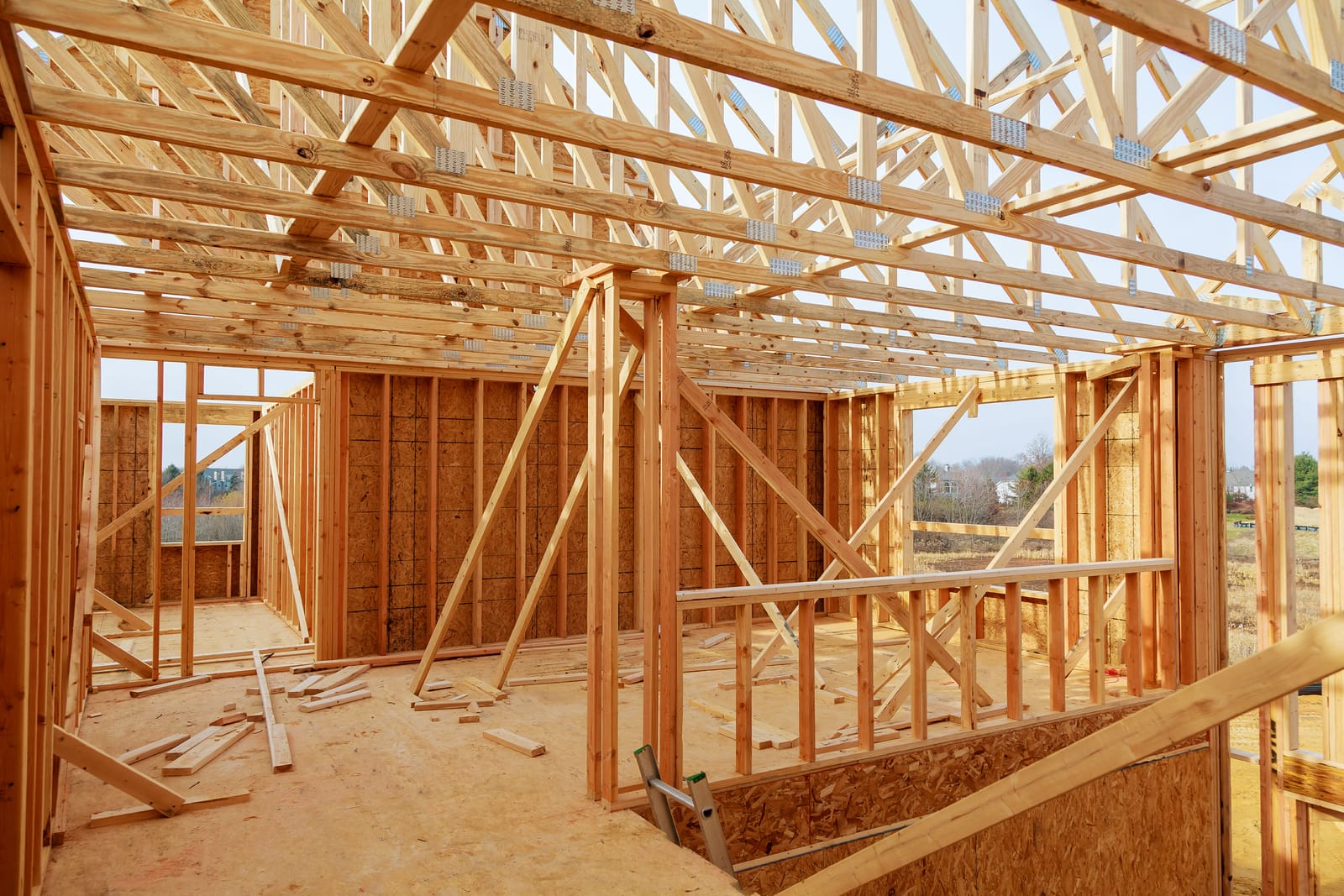
One of the most common causes of roof issues are problems related to the rafters or trusses; therefore, giving them a good look is critical when addressing sagging, bowed or wavy roofs. They have issues for a wide variety of reason, including damage from wind storms, overloading from ice and snow, leaks, etc.
In the attic, both rafters and trusses should be checked for cracks and damage. If the review from the exterior or interior provided any warning signs, then especially check the areas in the attic that are near the warning signs observed.
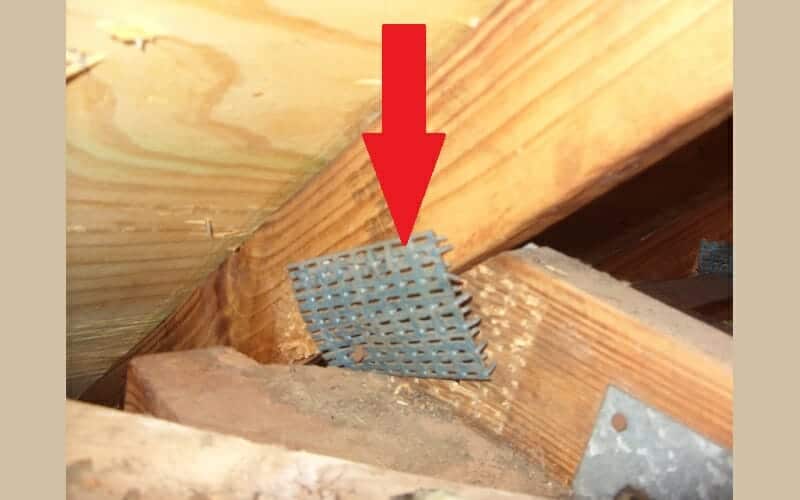
Truss connector plates
When there is extreme stress or overly heavy loads on a truss, the nailer / connection plates may come loose or bend. This can weaken the trusses and some trusses may even fail, thus connector plates should be examined. Unfortunately, insulation may cover a portion of these and so it may be necessary to pull back part of the insulation in order to observe all of the connector plates.
2. Collar ties

A collar tie is a horizontal piece of wood, often a 1×6 or similar piece of dimensional lumber, that is located in the top 1/3 area of the rafter span on a gable roof. It connects to rafters on the opposite side of the ridge board or beam.
They help prevent rafters from separating or pulling away from the ridge board or beam. They also help prevent a roofs’ downward movement or collapse from the weight of the roof cover material (i.e shingles, tiles, etc.), heavy snow loads and un-balanced loads from wind storms.
It’s not uncommon to find rafter ties crack, damaged, pulled loose or even missing at times. They should be repaired or replaced and doing so is usually a very easy task.
3. Rafter Ties
Rafter ties on gable type roofs are usually horizontal wood pieces (often 2×4’s or 2×6’s) that help keep the exterior wall tops from spreading outwardly. Normally in the bottom third area of the rafters or sitting on the exterior wall top plate.
Check for damage to rafter ties as well as their connection to the exterior walls. Should opposite exterior walls be leaning outwardly and there are rafter ties: be extra observant of the connection points to the outside walls.


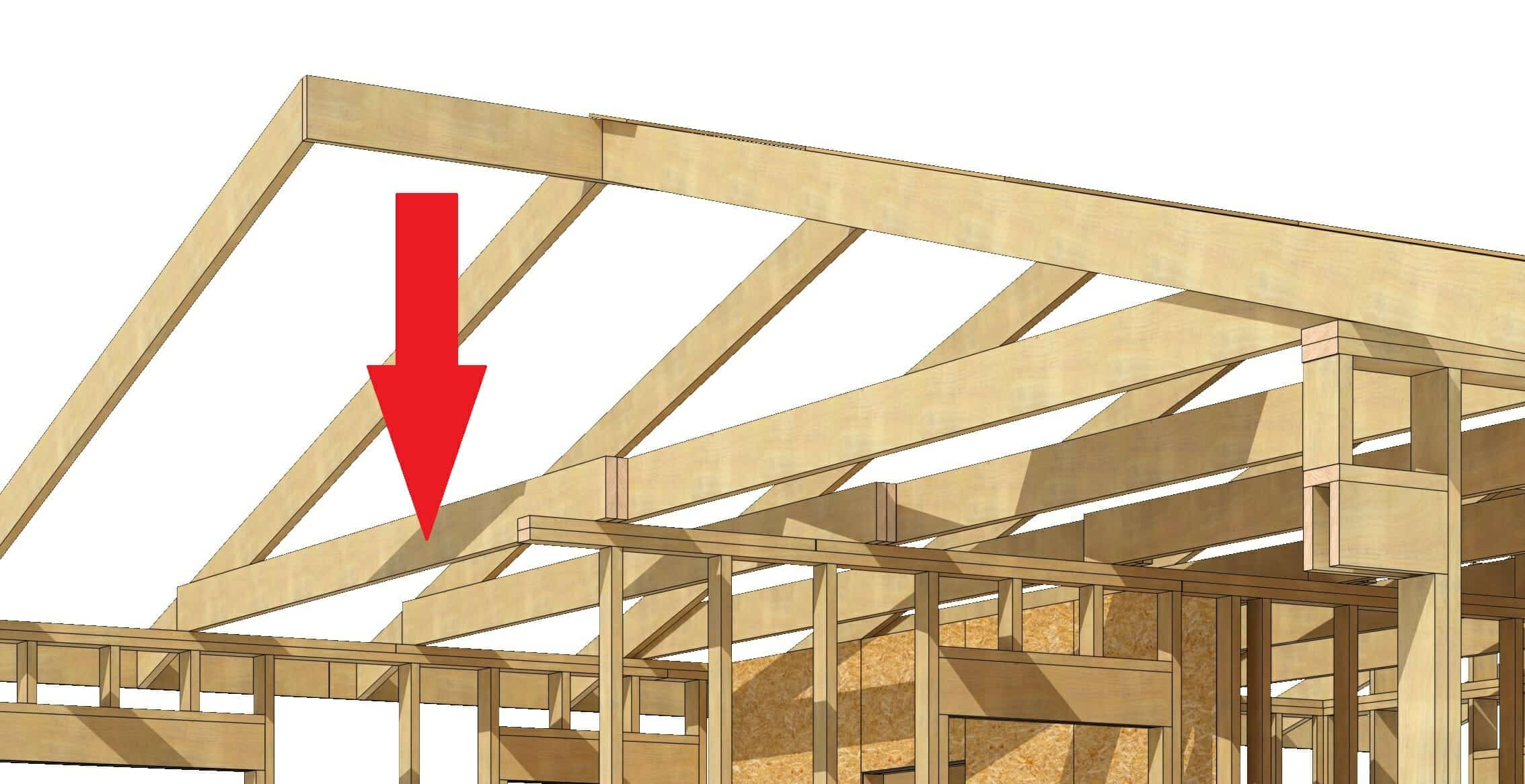 Close-up look at the construction and all wood framing process of this new home.Three-dimensional image. Cartoon conceptual image
Close-up look at the construction and all wood framing process of this new home.Three-dimensional image. Cartoon conceptual image

4. Ridge Beam or Ridge Board Sagging or Damaged
Roofs may sag because a ridge beam or ridge board is cracked or damaged. This may have been caused by any number of factors.
-
If a roof has been re-roofed with heavier roofing material than the original roof was engineered for; i.e the original roof was a light wood shingle roof and the new replacement roof is a concrete tile roof weighing 5 or 10 times more than the original roof. Then the beam or roof may sag.
-
When an old composition shingle roof becomes worn out or starts to leak, a new composition shingle roof may be laid right over the old composition shingle roof. Now the roof is twice as heavy and will possible sag.
-
A large snow or ice storm may have dumped a heavy load of snow on the roof, more than the roof was designed to carry.
Any of the above could cause the ridge to sage, so one should check for cracks or other damage. Another issue may be that supports for the ridge beam are damaged or undersized, thus this and all of the above should be checked.
5. Check for wood rot and deterioration

Roof leaks are the most common source of moisture in attics. Stains, damp musty odors and dampness are signs of a leaking roof. Naturally, if you see buckets or pots setting about, you know there’s probably moisture. Older roofs and roofs with damaged tiles, shingles, etc. are prone to leaking. Common areas for leaks include roof valleys, vent penetrations and chimney flashing areas.
Moisture, rot and mold weaken framing members and over time, rafters, trusses, rafter ties and roof sheeting may structurally fail.
Wood “Dry Rot” and “Wet Rot” weakens framing members and of the two, dry rot is the worst; basically, dry rot is more destructive and is the most serious form of fungal decay but wet rot is more prevalent. (Read more about dry rot – sometimes referred to as “Building Cancer”)
If you can easily stick a screw driver into deteriorated wood, then repair and remediation should be addressed sooner than later.
**Identifying differences between wet rot and dry wood rot **
Wet wood rot:
-
The wood may feel soft or spongy
-
Will often have a black looking fungus growing on it
-
May have a damp musty odor
Dry wood rot:
-
Often brownish in color
-
May have a whitish cob-webish or cotton-wool like substance growth on surface
-
May have “Fruiting” mushroom-like body, possibly with red spots on it
Mold and mildew
Check for mold and mildew evidence. When observed, there is generally a moisture problem and there may be wood strength issue as well, leading to sagging, bowing or waviness.
6. Termites and carpenter ant damage
Attics that have termites or carpenter ants may experience significant damage to wood rafters and trusses, as well as other framing members. If not treated, the lumber becomes weaker and may sag or fail, even collapsing in extreme cases.
Termites damage wood by eating the cellulose, and carpenter ants damage wood by boring holes in it (called tunnels) for their nest or galleries. It usually takes years for Carpentry ants to cause significant damage and you may see saw dust under the area of their tunnels. Often these ants appear in areas where there is moisture rather than dry areas.
Termite warning signs include damaged wood, frass (termite droppings) laying under the area where there doing damage and possible small termite wings will be laying in the same area.
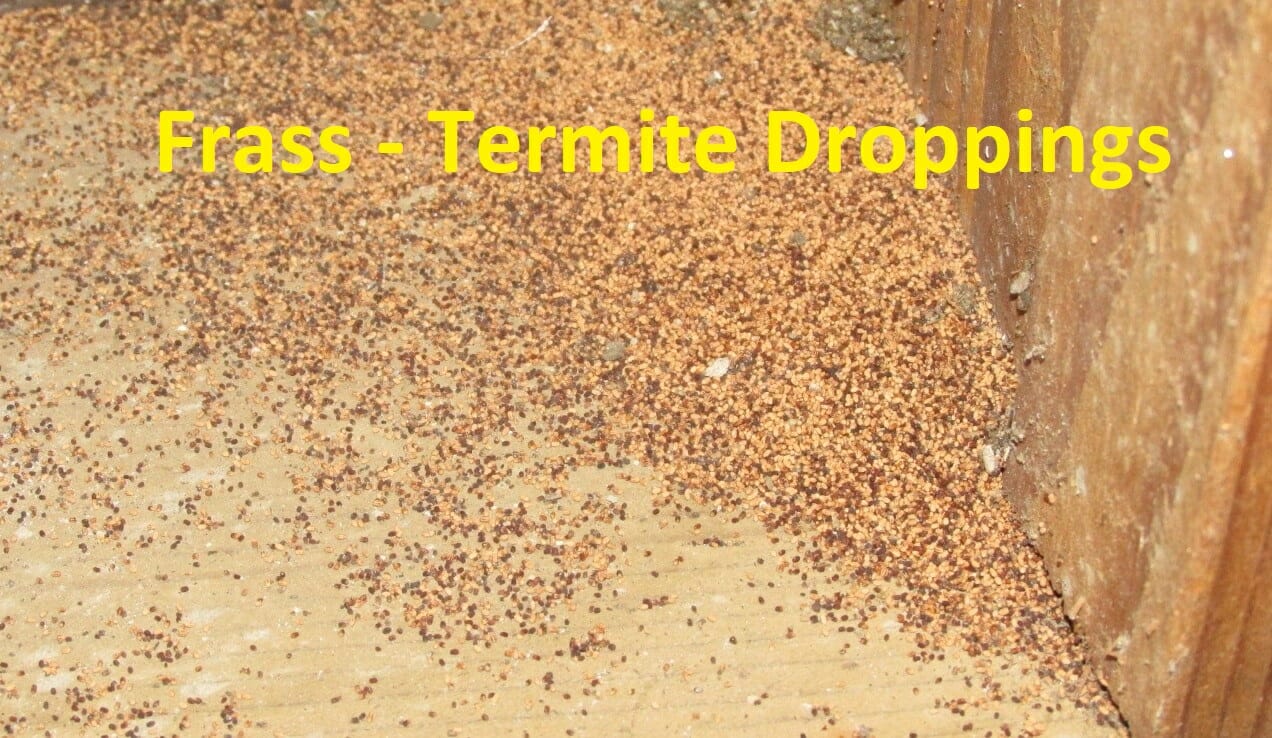
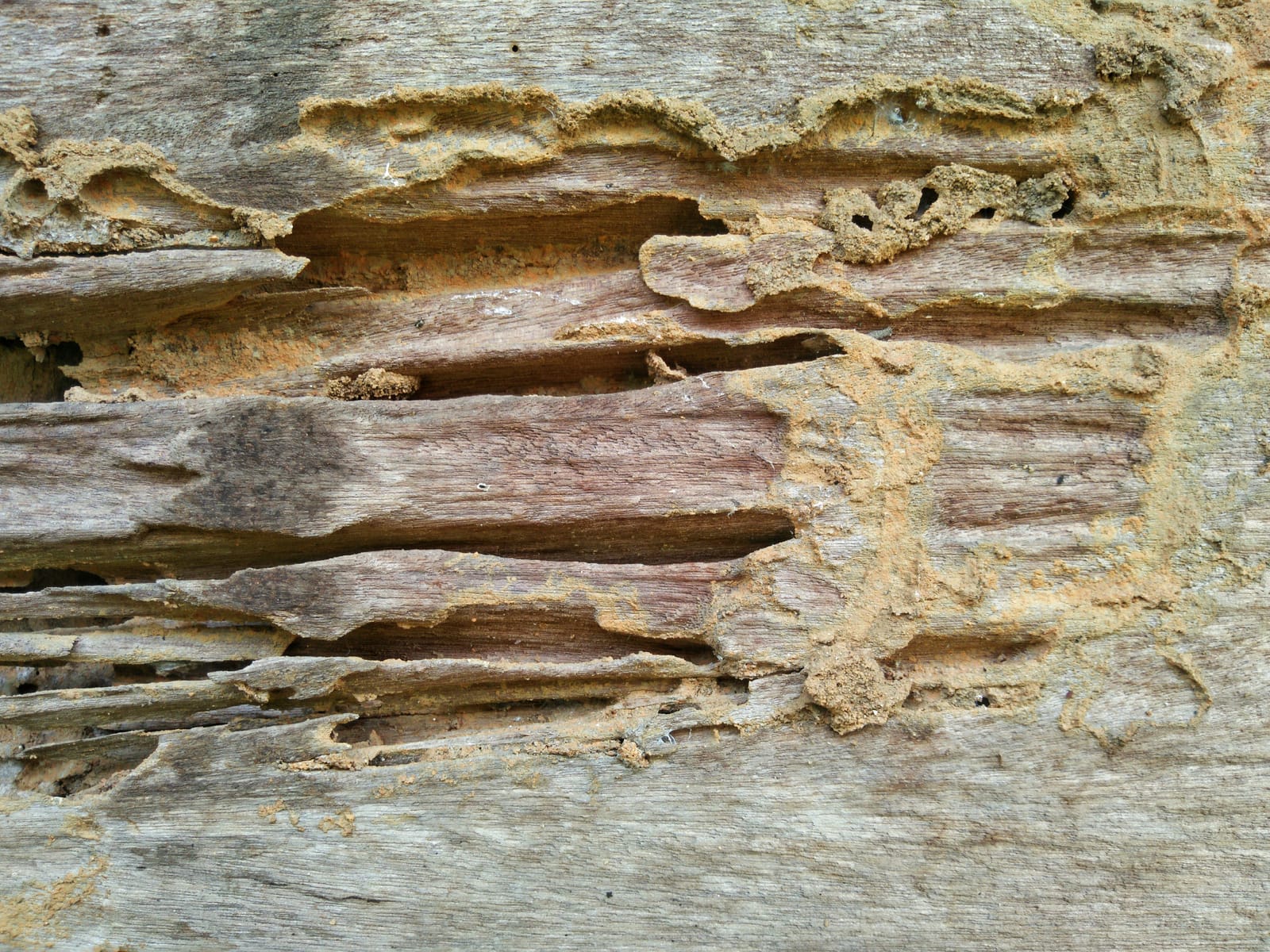
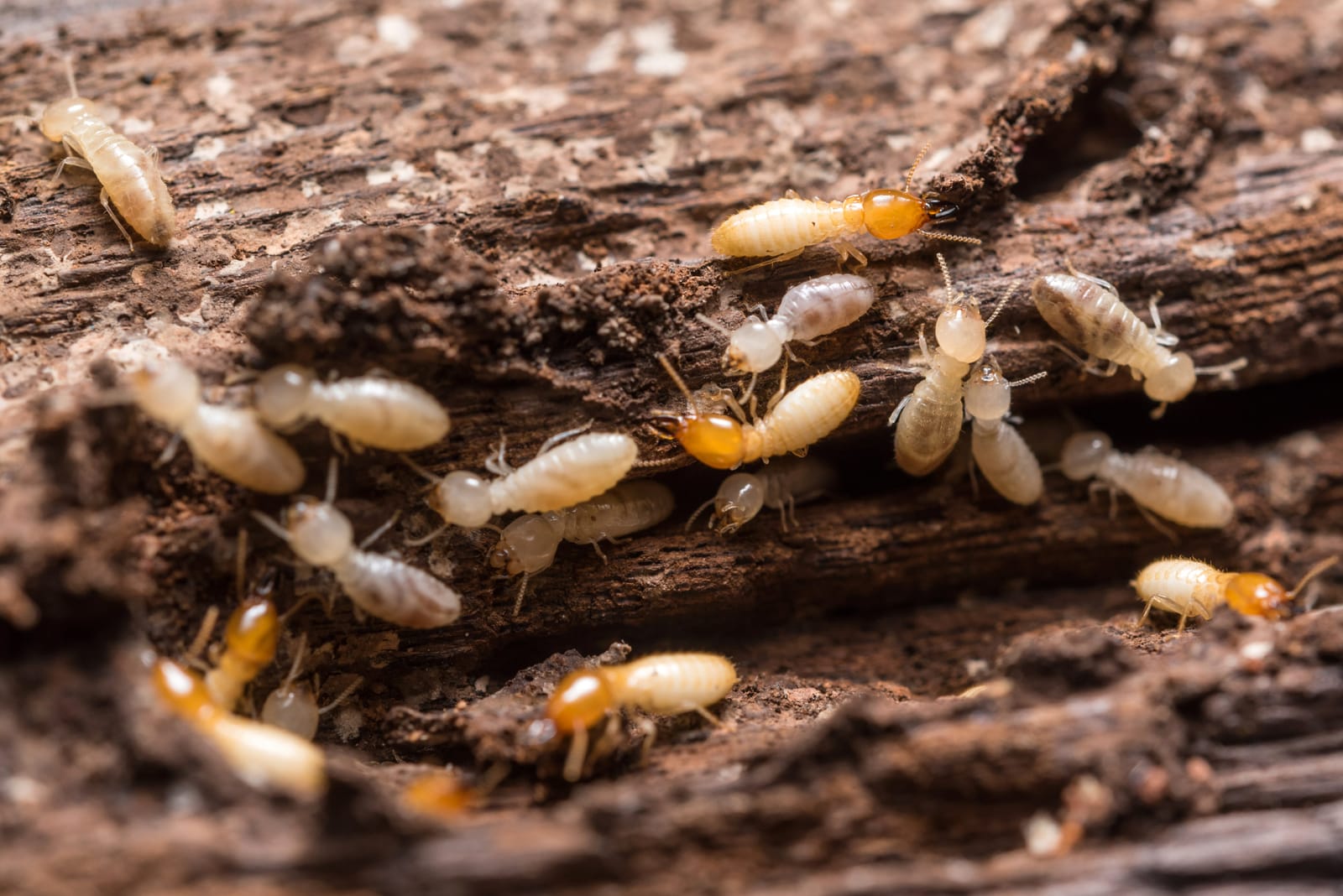 Close up termites or white ants
Close up termites or white ants
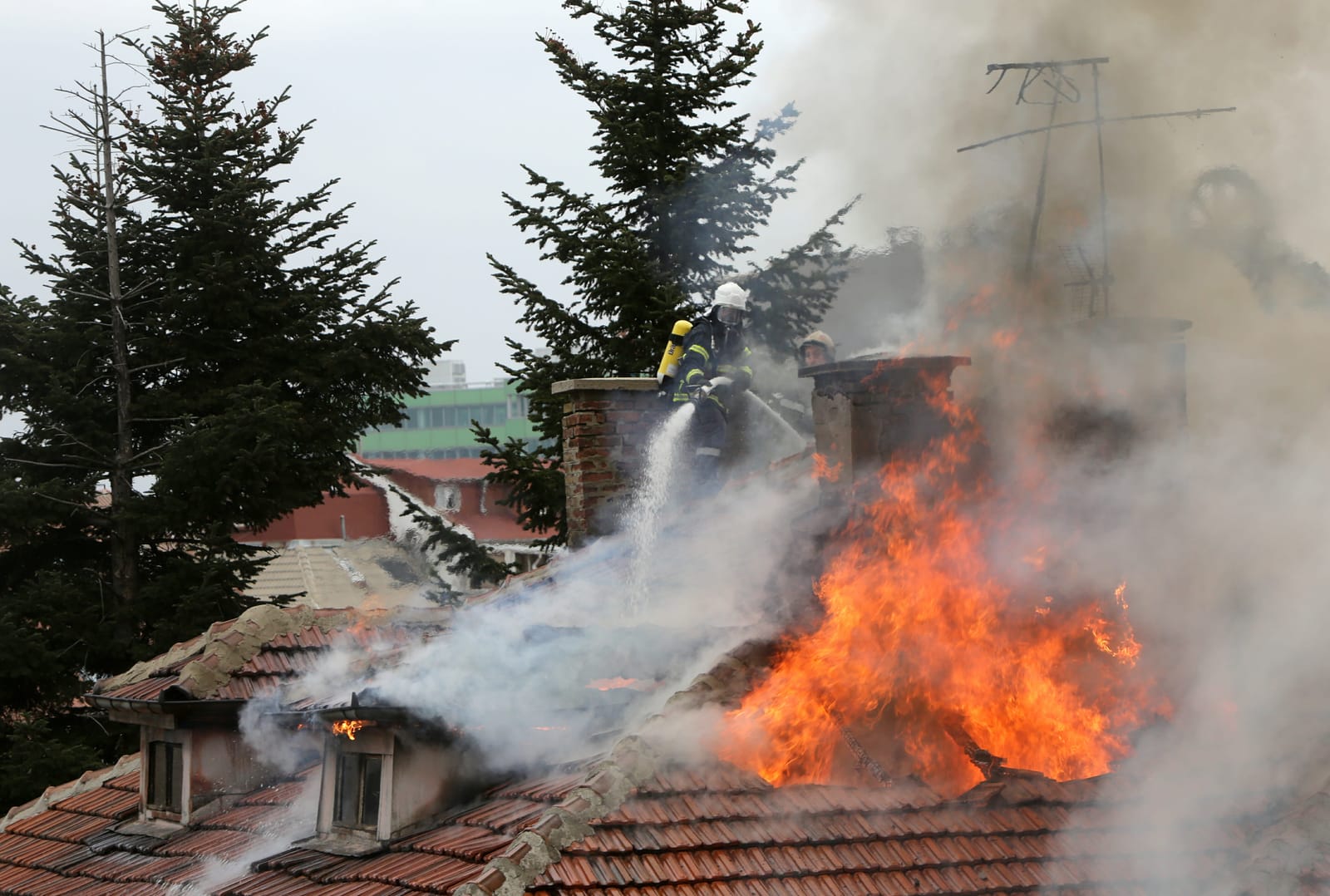
Has the attic been painted white
If the attic or portion of it has been painted white or some other color, then there may have been a fire in the attic. Often, if there has been a fire in the attic and after the repair contractor has finished the repairs he will paint the attic white (or other color). The purpose of doing this is to encapsulate any smoke odor residue from the past fire.
Should you notice the attic has been painted or notice a smoke odor, then inquire if there has been a fire. (Read more about attics being painted white)
C.L.U.E. Reports

If there has been storm or fire damage to a home and an insurance claim was made, then there will be a record of this in a C.L.U.E. report (Comprehensive Loss Underwriting Exchange). Home buyers often obtain a C.L.U.E. report in the home purchasing process in order to know if any claims have been made and what they were for.
Discovering a record of past damage to a roof, may help to determine if there have been repairs made. Should these repairs have failed or not been proper done, then the new buyer or past owner may have recourse against the contractor or possibly the work may be under warranty.
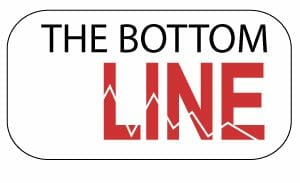
It is not unusual for roofs to have limited bowing, sagging or waviness over time, however, if it’s server or if it will progressively get worse, then correction is wise. If there are water issues or structural risk, then corrections should be done in a timely manner.
We all know that preventive maintenance is wise but many homeowners never think about checking their roof or attic areas until there is a highly visible issue, often a significant one, therefore, doing a check of your roof and attic every year is recommended.